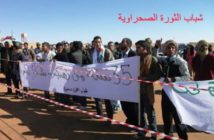PAKISTAN
From the Newspaper | Irfan Husain
SOME 12 years or so ago, I was in Tangier, the lovely coastal city in Morocco, and went to pay my respects at the modest tomb of Ibn Battuta, the town’s most famous son. Born there in 1304, he left for a pilgrimage to Makkah when he was 21.
Since then, he barely stopped travelling, covering around 75,000 miles by the time he died in 1368 or 1369. By far the most prodigious explorer of the Middle Ages, he visited China, much of South Asia, vast tracts of Africa, and south and east Europe, and left behind a complete record of his epic journeys.
Ibn Battuta passed through Timbuktu in 1352 when it was a small, bustling town. It had not then attained the importance it would a couple of centuries later as a major trading centre where camel trains passed through on their way from the west coast to many points in Africa.
In Mali, Ibn Battuta commented on the piety of the Muslims he encountered. Apparently, the mosques were so full that fathers would send their sons early to reserve a place for them for Friday prayers. Apart from being an important trading centre, Timbuktu was also a focal point of Islamic scholarship with three universities and 180 Quranic schools. Many stunning mosques were built there, as were imposing shrines to Sufi saints and other holy men.
Gradually, Timbuktu lost its importance to the point where its name became synonymous with a remote, almost mythical place. ‘From here to Timbuktu’ is an expression denoting a huge distance. Nevertheless, this did not prevent Dr A.Q. Khan, our very own nuclear proliferator, from visiting the now run-down town three times and apparently buying a hotel that he named after his wife, Hendrina.
Given its long history and striking architecture, it is no wonder that Timbuktu has been named a Unesco world heritage site. Sadly, this distinction has not stopped thugs of the Ansar Dine, or Defenders of the Faith, from destroying and damaging a number of ancient mosques and mausoleums.
Justifying their sacrilegious acts, an Ansar spokesman claimed that the design of the tombs was “idolatrous” as according to him, Islam prescribes about “the way and size in which tombs are built”. This is news to me, but then I’m no Islamic scholar.
This wanton destruction of historically and religiously significant structures is reminiscent of the Taliban’s demolition of the famous giant Buddha statues in Bamiyan. So outraged was the entire world at this criminal act of vandalism in early 2001 that even Muslim countries did not protest when the Taliban were attacked and sent packing later that year in the wake of 9/11.
Apart from their ignorance and brutality, the other thing the Taliban and the Ansar Dine have in common is their Wahabi/Salafi belief. Thisliteralist Saudi tendency has seen the destruction of historically and religiously important buildings, including ancient tombs in Makkah and Madina. Entire historic sites have been bulldozed.
Curiously, most of the Muslim world has remained largely silent over this desecration. But none of this is new: the destruction of religious buildings has been going on in Saudi Arabia for centuries. Irfan Ahmad, who is associated with the Centre for Islam in the Modern World at Australia’s Monash University, writing in Issue 15 of Islamica Magazine (now sadly defunct) informs us:
“In 1802, an army led by the sons of Mohammed Ibn Abd al-Wahab (the founder of Wahabism) and Mohammed ibn Saud occupied Taif and began a bloody massacre. A year later, the forces occupied the holy city of Makkah. They executed a campaign of destruction in many sacred places and levelled all the existing domes, even those built over the well of Zamzam… In 1806, the Wahabi army occupied Madina. They did not leave any religious building, including mosques, without demolishing it…”
Wahabis/Salafists and other fundamentalists draw inspiration from the mediaeval scholar Ibn Taymiyyah to rationalise the destruction of ancient religious buildings.
This quotation from Ibn Taymiyyah is deployed bythem to defend their antipathy towards ancient holy sites: “The leaders of Islam agreed that it is not permitted to build the mausoleums over the graves. They cannot be considered mosques and praying over them is not permitted.”
Presumably, if these fundamentalists could have their way, most of the world’s historical, religious and architectural heritage would have been levelled by now. Pyramids, temples and churches that have stood for centuries would have gone the way of the Bamiyan Buddhas.
Mughal contributions to civilisation like the Taj Mahal, and Istanbul’s Ottoman Blue Mosque, would have been razed by the likes of the Taliban and the Ansar Dine. The exquisite Moorish buildings in Spain would have been blown up or bulldozed if the Salafis had their way.
Unsurprisingly, these hordes have little to contribute to learning and culture: they know only to kill and destroy. Rather than preserving the past and respecting the dead, they campaign to erase every vestige of history from memory except their version of it.
Oddly, they claim to speak exclusively for a religion that enjoins its followers to seek knowledge from the far corners of the world. In their view, any Muslim who differs from their narrow vision of the faith is a non-believer and therefore ‘wajib-ul-qatal’, or deserving to be put to death. They have thus appointed themselves judge, jury and hangman.
The Muslim mantra is that these extremists are a small minority, and their views and actions should not colour the world’s opinion about Islam as a whole. But the truth is that even a tiny fraction of some 1.3 billion Muslims amounts to enough dangerous militants to cause havoc around the world.
In places like north Mali, north Nigeria, Yemen, Somalia, Afghanistan and large tracts of Pakistan, this cancer is spreading. Something all these areas have in common is a power vacuum that is being filled by extremist groups subscribing to the rigid, intolerant belief of Al Qaeda. Invariably, they follow the strict code of Salafism espoused by the Saudis.
Faced by these dangers, the Muslim world has opted for silence and supine inaction. In some cases, there is active if covert support from the state. Few raise their voices in protest. I suppose it’s only a matter of time before Ibn Battuta’s small mausoleum in Tangier is demolished, too.
The writer is the author of Fatal Faultlines: Pakistan, Islam and the West.
.







